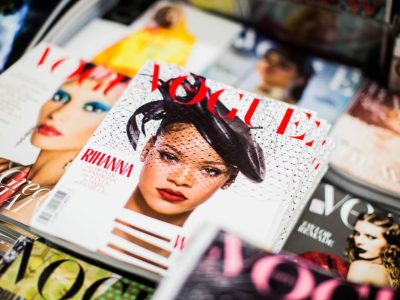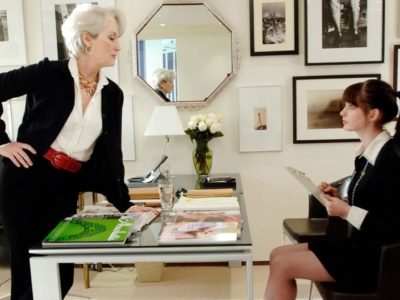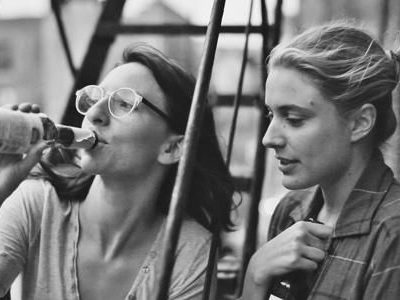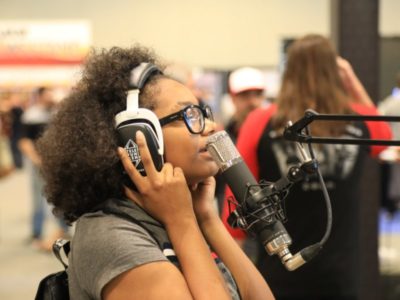News flash: becoming a designer or professional stylist is not the only career that allows you to pursue your passion for fashion. The elite world of fashion journalism acts as the backbone of the fashion industry, informing the world on the latest trends, styles and serves straight from the runways and red carpets.
Glamorous on the outside but tough on the inside, here’s the breakdown of what you need to become the next Anna Wintour.
So, What Does It Take?

To make a long story short, a step by step guide to a successful career in fashion journalism simply does not exist. Unlike many other professions, no extra schooling or certifications are required, which can be either relieving or stressful. For instance, on the path to becoming a doctor, you go from undergrad to medical school, to residency and are practically guaranteed a steady job after your mandatory 12 years of studying, learning and stress-induced crises. However, once you’re out of undergrad, fashion journalism throws you into the deep end and yells ‘good luck’. The love of creative freedom comes with the price of not having your dream position waiting for you after graduation. But alas, pursuing the career simply means a combination of hard work, gaining experience, building a portfolio and constantly learning as you go.
While not absolutely mandatory, having a degree in journalism, English or a degree from a fashion school ultimately gives you a better chance of being a desirable applicant. College also allows optimum networking opportunities and experience from writing for campus publications, which is arguably the most important aspect of finding success as a fashion journalist. “I wanted to work for a fashion magazine and I knew that I would be competing with people with more connections and more impressive resumes, so I tried to get as much experience as I could,” said Kelsey Steigman, Illinois State University alum and Senior Style Editor at Seventeen Magazine. “I started writing fashion features for the school newspaper and worked my way up to Features Editor, which helped me get my first ever internship – an editorial position at Seventeen.com.” College offers resources to build your hiring appeal, not just a degree.
Where Should You Start?

An important note to remember is failing to snag an internship at some massive publication right off the bat does not mean you’re an utter failure. In fact, wanting to pursue this career path straight out of high school is not a mandatory step towards succeeding. “At 37, I decided the time was right to immerse myself in photography through education once again and so I made the decision to apply for university, enrolling on to the Norwich University of the Arts Photography B.A. course,” said freelance fashion photojournalist Kerry Curl. “By this point I’d also done some training as a hair & makeup artist. These seemed a more stable way to earn a living than photography.” The world of fashion will always need to be written about or photographed, so as long as you stand out with your abilities and creative spark, your starting point is not the end all be all for an employer’s willingness to offer you the job.
But how do you even get anywhere to hire you in the first place? Your trusty, essential portfolio, of course. Whether you create a fashion blog, a file of your photography or clips from a campus publication, the collection will become your best friend depending on what specific path you want to pursue within the industry. “I think it’s all about presentation, actually,” said Curl. “It’s great to have a portfolio of bylines, but showing that you’re enthusiastic about the stories you’ve written or work you’ve completed is what will stand out to any recruiter or hiring manager.” Your portfolio will naturally grow through your different jobs and positions, which will eventually serve as the key to the rest of your career. You can’t slap your bachelor’s degree on an employer’s desk and say, “Trust me, I’m good.”
What’s the Job Really Like?
Let’s Talk About Money

The average fashion journalist salary falls within the low $40,000 range. However, many factors weigh into your pay depending on the specific job type. Staff writers, editors, photojournalists and social media managers greatly differ in income. For instance, the Editor-in-Chief obviously snags a little more dough than the position of running the company’s Instagram and Twitter accounts. Also, your employer and location are crucial, as working for a major publication in NYC most likely leads to a little more success than running a freelance blog from your bedroom in Podunk, Ohio. The title of fashion journalist is a massive umbrella with many positions and paths being covered, making a specific salary difficult to pinpoint.
Definitely Not a Nine to Five

If you’re looking for a consistent schedule with predictable hours, fashion journalism may not be up your alley. Overall, the schedule proves to be inconsistent and somewhat hectic. Because the job very much has to do with keeping up with trends and attending shows, certain times of the year are much busier than others. For instance, the insane amount of shows and press events during Fashion Week offers true insanity. While publications give you relatively predictable tasks such as a certain number of articles to publish per week or attending team meetings, the majority of the work tends to be situationally and seasonally based, or self-driven if you’re a freelance worker. The worlds of fashion and pop culture are very much intertwined, which constantly provides new stories on what celebrities are wearing or designing. Fashion doesn’t stop evolving, so you’ll never stop working.
Due to a direct correlation with many evolving aspects of pop culture and society overall, this branch of writing proves to be uniquely challenging. “The most difficult part of having a fashion writing job, specifically, and not just any writing job, is having to navigate writing enthusiastically about clothing during hard times in our world,” said fashion editor at POPSUGAR Sarah Wasilak. “It hasn’t been easy to consider a fashion article the most important thing on my to-do list every day when our world is facing a pandemic and social injustice. Having to reconfigure the lens and approach writing content in a different light is definitely challenging, but it feels good when you realize it’s not only manageable, but uplifting to others.” Adjusting to the world’s current events can be fun and refreshing, but also strenuous at times.
Sitting in An Office Cubicle? Hard Pass

The world serves as your office. You may have an office headquarters that acts as a sort of home base, but you can obviously write from anywhere. As a photojournalist, you’ll constantly end up on different shoots and shows in varying locations. You never know where you’ll have to go to interview someone, or where you’ll be sent for a show or PR event.
Isn’t Journalism Dying?

Do not fall for the whole “journalism is dying” gimmick. Fashion journalism and the growth of digital media go hand in hand, with the change helping the industry flourish on new platforms. Social media stars and A-List celebrities receive invites to promote shows and designers to their millions of followers, plus online magazines and profiles allow for easier general public engagement, especially when looking at photos from shoots or shows. Personally, I follow a ton of fashion publications on Instagram, but rarely pick up one of their actual printed magazines. So, you’re actually breaking into the field at a transformative yet ideal time.
The Big Three

Exceptional Communication Skills
Interviews and networking: the two major aspects of fashion journalism aside from actual fashion. You cannot be productive without being a proficient communicator. In a field demanding avid self advocation to succeed, speaking up for yourself and knowing how to approach future employers lying at the root of success.
Personability
Within many careers and even broader aspects of life, being a likable individual ultimately helps move you forward. Who wants to work alongside someone who they don’t enjoy being around? Because success in the fashion journalism industry heavily weighted on personal connections, being personable will do more than help land you the job. It will also motivate people to remember you and spread your resume through recommendations.
A Creative, Detail Oriented Eye
Creativity may seem obvious, but the importance can never be overstated. An eye for catching an upcoming trend before deemed mainstream, noticing the most minuet details of an outfit and obviously having an exceptional yet unique fashion taste are staple aspects of securing the job. These traits make your portfolio stronger, which leads to connections, and then boom! Job in your lap (not exactly, but you get the point).
Now that you’re an expert on pursuing fashion journalism (kind of), head off into the world with the wise words of Coco Chanel in your memory: “In order to be irreplaceable, we must always be different.”



















